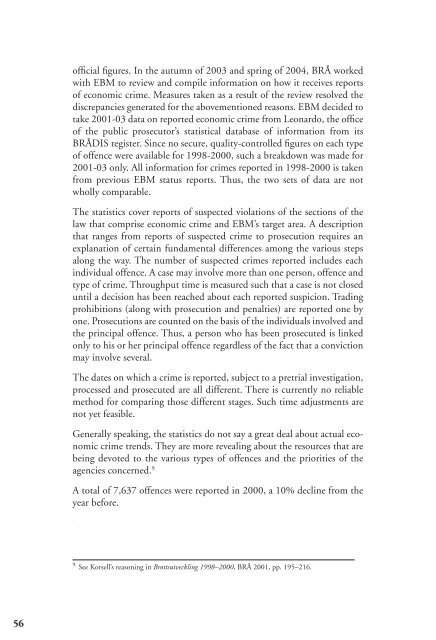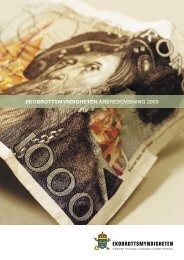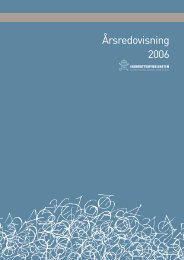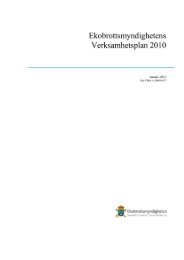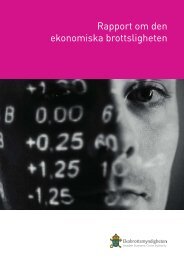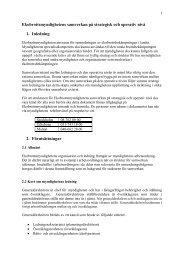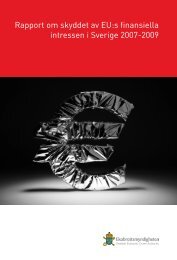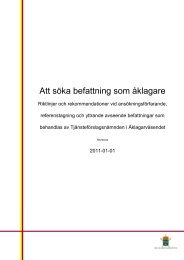Economic crime report 2004 - Ekobrottsmyndigheten
Economic crime report 2004 - Ekobrottsmyndigheten
Economic crime report 2004 - Ekobrottsmyndigheten
Create successful ePaper yourself
Turn your PDF publications into a flip-book with our unique Google optimized e-Paper software.
official figures. In the autumn of 2003 and spring of <strong>2004</strong>, BRÅ worked<br />
with EBM to review and compile information on how it receives <strong>report</strong>s<br />
of economic <strong>crime</strong>. Measures taken as a result of the review resolved the<br />
discrepancies generated for the abovementioned reasons. EBM decided to<br />
take 2001-03 data on <strong>report</strong>ed economic <strong>crime</strong> from Leonardo, the office<br />
of the public prosecutor’s statistical database of information from its<br />
BRÅDIS register. Since no secure, quality-controlled figures on each type<br />
of offence were available for 1998-2000, such a breakdown was made for<br />
2001-03 only. All information for <strong>crime</strong>s <strong>report</strong>ed in 1998-2000 is taken<br />
from previous EBM status <strong>report</strong>s. Thus, the two sets of data are not<br />
wholly comparable.<br />
The statistics cover <strong>report</strong>s of suspected violations of the sections of the<br />
law that comprise economic <strong>crime</strong> and EBM’s target area. A description<br />
that ranges from <strong>report</strong>s of suspected <strong>crime</strong> to prosecution requires an<br />
explanation of certain fundamental differences among the various steps<br />
along the way. The number of suspected <strong>crime</strong>s <strong>report</strong>ed includes each<br />
individual offence. A case may involve more than one person, offence and<br />
type of <strong>crime</strong>. Throughput time is measured such that a case is not closed<br />
until a decision has been reached about each <strong>report</strong>ed suspicion. Trading<br />
prohibitions (along with prosecution and penalties) are <strong>report</strong>ed one by<br />
one. Prosecutions are counted on the basis of the individuals involved and<br />
the principal offence. Thus, a person who has been prosecuted is linked<br />
only to his or her principal offence regardless of the fact that a conviction<br />
may involve several.<br />
The dates on which a <strong>crime</strong> is <strong>report</strong>ed, subject to a pretrial investigation,<br />
processed and prosecuted are all different. There is currently no reliable<br />
method for comparing those different stages. Such time adjustments are<br />
not yet feasible.<br />
Generally speaking, the statistics do not say a great deal about actual economic<br />
<strong>crime</strong> trends. They are more revealing about the resources that are<br />
being devoted to the various types of offences and the priorities of the<br />
agencies concerned. 9<br />
A total of 7,637 offences were <strong>report</strong>ed in 2000, a 10% decline from the<br />
year before.<br />
.<br />
9. See Korsell’s reasoning in Brottsutveckling 1998–2000, BRÅ 2001, pp. 195–216.<br />
56


